Springfield, Missouri, Hgh State Clinic, Hgh Injections, Hrt Doctors
Springfield, Missouri Blood Testing Facilities
 Represents a LabCorp blood testing facility
Represents a LabCorp blood testing facility Represents a Quest Diagnostics blood testing facility
Represents a Quest Diagnostics blood testing facility
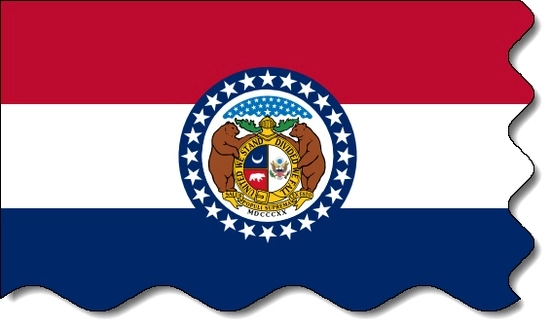
Nearby Labcorp Blood Testing facilities:
- Labcorp Center Distance: 5 m, 1310 E Kingsley St Ste A, Springfield, Greene County, MO, 65804
- Labcorp Center Distance: 61 m, 214 Carter St, Berryville, Carroll County, AR, 72616
- Labcorp Center Distance: 69 m, 1905 W 32Nd St Ste 101, Joplin, Jasper County, MO, 64804
- Labcorp Center Distance: 81 m, 213 W Monroe Ave Ste C, Lowell, Benton County, AR, 72745
- Labcorp Center Distance: 86 m, 613 Orchard Dr, Berryville, Other, AR, 72703
- Labcorp Center Distance: 89 m, 509 E Millsap Rd Ste 103, Fayetteville, Washington County, AR, 72703
Nearby Quest Blood Testing facilities:
- Quest Center Distance: 4 m, 3302 South National, Springfield, Greene County, MO, 65804-2231
- Quest Center Distance: 37 m, 15735 Us Highway 160, Forsyth, Taney County, MO, 65653-8223
- Quest Center Distance: 68 m, 3202 Mcintosh Circle, Joplin, Newton County, MO, 64804-3646
- Quest Center Distance: 78 m, 1200 Se 28Th St, Bentonville, Benton County, AR, 72712-3881
- Quest Center Distance: 90 m, 7 E Appleby Rd, Fayetteville, Washington County, AR, 72703-3902
- Quest Center Distance: 92 m, 601 E 13Th St, Grove, Delaware County, OK, 74344-2962
- Quest Center Distance: 97 m, 1220 E State Route 72, Rolla, Phelps County, MO, 65401-3938
Springfield Missouri Hormone Replacement Therapy Services
The Conscious Evolution Institute is your source for quality Hormone Optimization and Restoration programs in the Springfield Missouri Metropolitan area. Whether you are interested in Testosterone Replacement for Low-T, Bio-Identical Human Growth Hormone, or any of the other highly effective options that we offer, you will get high-quality, affordable treatment from a Hormone Clinic with significant experience in the treatment of Hormone Imbalance. We utilize Physician-Mediated Hormone Replacement Therapy to bring Hormone Levels back to normal and healthy levels for men and women thirty years of age and older.
If, as you grow older, you have started to experience a decline in health and wellness that you feel may be associated with HGH or Testosterone Deficiency, we strongly urge you to seek out a reputable provider of Hormone Care in your area. We can arrange for you to meet with one of our affiliate physicians in the Springfield area, or anywhere in the state of Missouri, in order to receive the necessary in-person evaluation and blood sample needed for our clinic to act appropriately on your behalf. With a Comprehensive Hormone Panel, we take a snapshot of your Hormone Health and your overall wellness that we will use to construct a Hormone Therapy Regimen designed to make you feel like a brand new person.
If all of this sounds appealing to you as a patient, the Conscious Evolution Institute is just a phone call away. We are a Licensed and Board-Certified Hormone Clinic, and we have Hormone Specialists standing by to take your call any business day. If you'd like to contact us online, feel free to fill out the form on this page to establish contact with our clinic!
HGH Injection Therapy Prescriptions in Springfield Missouri
One of the many HRT Programs that we offer at our Hormone Clinic is Bio-Identical HGH Therapy, for patients with Age-Associated Growth Hormone Deficiency, or Somatopause. The older that we get, the less effective that our bodies are at producing Human Growth Hormone on their own. Adult production remains at a healthy plateau throughout our twenties, only to slowly fall for the rest of our lives. At first, these changes in HGH Balance are imperceptible, but over the course of years and decades, it leads to significant issues which impede good health and accelerate natural aging.
Symptoms of Growth Hormone Deficiency are varied, because HGH Insufficiency affects practically all systems of the body. Signs of HGH Deficiency are unexplained weight gain, depression, loss of muscle mass, fatigue, trouble recovering from illness, difficulty healing from injury, mild cognitive decline and more. With Injectable HGH Therapy, it is possible to mitigate these symptoms and improve health and wellness.
Springfield Missouri Sermorelin Acetate for Growth Hormone Optimization
Sermorelin is another option on the table for patients struggling with HGH Deficiency symptoms. Sermorelin promotes the natural production of Human Growth Hormone by the pituitary, because it is functionally identical to the GH-RH Growth Hormone Precursor. This form of treatment is shown to be equally effective as HGH for the treatment of Somatopause, and is less expensive and can be prescribed off-label as needed by your Prescribing Hormone Physician.
Low-T Clinics in Springfield Missouri: Proven Testosterone Therapy Treatments
In addition to our quality HGH Boosting Prescription Products, we also specialize in Prescription Testosterone Therapy for Andropause. Testosterone Deficiency inhibits sexual function and kills libido, but it also affects male health in many other major ways that keep men from feeling good and being healthy. Men with Low-T are more likely to suffer from heart attack, stroke, diabetes, obesity, anxiety, osteoporosis, and more.
Contact us today to set up an appointment to reveal your Free and Total Testosterone Levels. If our tests show that your Testosterone Levels are too low, we can prescribe you the Testosterone Therapy option that works for you, whether that be topically applied Testosterone Creams, Testosterone Injections, or Transdermal Low-T Patches. Don't live with Testosterone Deficiency when there are safe and affordable treatments available to you from a legitimate Hormone Therapy Provider.
Springfield Missouri Information
The city of Springfield Missouri is the 3rd most populous city in the state, behind St. Louis and Kansas City. Metro Springfield is home to more than 500,000 people, and the city is situated in Greene County. Springfield is often referred to by the nickname, The Queen City, because it is a metropolitan area that rests deep in the center of the Ozark Mountains, which are the biggest mountain range between the Rockies and the Appalacians. Springfield is one of the oldest cities in the state of Missouri, as it came to be in the year 1833.
Springfield is a beautiful area, with tons of parks and sources of outdoor entertainment. Some of the many parks in and around Springfield Missouri are Wilson's Creek National Battlefield, Bois D'Arc Conservation Area, Nathanial Greene Park, McDaniel Park, and Lone Pine Park. Two golf courses are located at Hickory Hills Country Club, and the Smith Golf Course. One interesting feature on the Springfield Landscape is the Mizumoto Japanese Stroll Garden. This garden is the key fixture of the Springfield Botanical Gardens, and is modeled after gardens designed for peaceful reflection in Japan.
Suburbs of Springfield Missouri include Turners, Rogersville, Linden, Fremont Hills, Nixa, Battlefield, Republic, Plano, Cave Spring, Ebenezer, Avalon Park, and Strafford. The neighborhoods of Springfield are Doling Park, Parkwood, Robberson, Woodland Heights, Tom Watkins, Fairfield Acres, Heart of the Westside, Grant Beach, Midtown, Weller, Cooper Park, Bingham, Rountree, West Central, West Side, Young Lilly, Ewing, Fassnight, Phelps Grove, Delaware, Oak Grove, Southern Hills, Brentwood, Meador Park, Seminole, Mark Twain, Sherwood, Parkcrest, Kickapoo, Bradford Park, Primrose, Sequiota, Lake Springfield, and Southside.
All About Springfield, Missouri Geographic Area
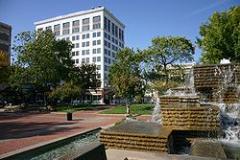
Springfield is the third largest city in the U.S. state of Missouri and the county seat of Greene County. According to the 2010 census data, the population was 159,498, an increase of 5.2% since the 2000 census. The Springfield Metropolitan Area, population 436,712, includes the counties of Christian, Dallas, Greene, Polk and Webster. Springfield's nickname is the Queen City of the Ozarks and is known as the Birthplace of Route 66 as well as the home of several universities including Missouri State University.
The territory known as Missouri was included in the Louisiana Purchase of 1803. Soon after, the Delaware Native Americans received treaty land where Springfield aos Sequiota Park and the antique stores of its Galloway Village stand today. To the west, 500 Kickapoo Native Americans built wickiups on the prairie that still bears their name. Missouri became a state on August 10, 1821, and in 1833 the legislature designated most of the southern portion a single county. It was named for American Revolutionary War General Nathanael Greene, largely through a campaign by Springfield's founder, John Polk Campbell, to honor a man he admired. A Tennessee homesteader, Campbell announced his claim in 1829.
The origin of the name Springfield remains unclear; however, the most common view is that the city was named for Springfield, Massachusetts. One account holds that a James Wilson, who lived in the then-unnamed city, offered free whiskey to everyone who would vote for naming it after his home town of Springfield, Massachusetts. In 1883, the historian R. I. Holcombe wrote, to the contrary, "The town took its name from the circumstance of there being a spring under the hill, on the creek, while on top of the hill, where the principal portion of the town lay, there was a field." He went on to note, "This version of the origin of the name is disputed by the editor of the Springfield Express, Mr. J. G. Newbill, who, in the issue of his paper, November 11, 1881, says: 'It has been stated that this city got its name from the fact of a spring and field being near by just west of town. But such is not a correct version. When the authorized persons met and adopted the title of the "Future Great" of the then Southwest, several of the earliest settlers had handed in their favorite names, among whom was Kindred Rose, who presented the winning name, "Springfield," in honor of his former home town, Springfield, Robertson county, Tennessee.'"
Springfield was incorporated in 1838. That same year, Cherokee Native Americans were forcibly removed by the U.S. government from their homelands in Tennessee, Alabama, North Carolina and Georgia to the auIndian Territory. au Their route became known as the Trail of Tears due to the thousands of Cherokee deaths on the journey and as a result of the relocation. The Trail of Tears passed through the Springfield area via what is known today as the Old Wire Road. The Trail of Tears National Historic Trail auto tour route is along Interstate 44 westward to U.S. 160 (West By-pass in Springfield) and westward along U.S. 60.
The Old Wire Road, then known as the Military Road, served until the mid-1840s as a connection between Springfield and the garrison at Fort Smith, Arkansas. By 1858, the Butterfield Overland Stage began utilizing the road offering passage to California. Two years later, the region aos first telegraph line was strung along the road, and it was dubbed the Telegraph or Wire Road. The road proved vital during the Civil War, and its most historic connection is to the Battle of Pea Ridge in Arkansas. While portions of the road exist today, the most easily accessible is within Wilson aos Creek National Battlefield.
The Missouri Pacific (then the Pacific Railroad) was the first railroad to cross the Mississippi River and thence into Springfield and other locations. Later on the St. Louis San Francisco Railroad (Frisco Railroad) established its headquarters in Springfield. Commercial and industrial diversification came with the railroads and strengthened the City of Springfield and North Springfield when the two towns merged 17 years later in 1887. Today visitors can enjoy the view from the Jefferson Avenue Footbridge, peering below to the locomotive path which is still in use.
With the American Civil War imminent and Missouri a border state, Springfield was divided in its sentiments. On August 10, 1861, army units clashed in the Battle of Wilson's Creek, the site of the first major conflict west of the Mississippi River, involving about 5,400 Union troops and 12,000 Confederates. Gen. Nathaniel Lyon was killed, the first Union general to die in combat, and the Confederates were victorious. Union troops fell back to Lebanon, then Rolla, and regrouped. When they returned to Springfield, the Confederates had withdrawn.
The First Battle of Springfield, or Zagonyi's Charge, occurred on October 25, 1861. It was the only Union victory that year in southwestern Missouri. The fighting led to increased military activity in Missouri and set the stage for the Battle of Pea Ridge in March 1862, which essentially cemented Union control of the state.
For the next year, possession of the city seesawed. Then on January 8, 1863, Confederate forces under Gen. John S. Marmaduke advanced toward the town square and the Second Battle of Springfield ensued. As evening approached, the Confederates withdrew. The next morning, Gen. Marmaduke sent a message to Union forces asking for proper burials for Confederate casualties. The city would stay under Union control until the end of the war.
Two years after the war ended, Springfield National Cemetery was created. The dead of both the North and the South were interred there, though separated by a low stone wall (later removed). In 1960, the National Park Service, recognizing the significance of the 1861 battle, designated Wilson's Creek National Battlefield. The 1,750-acre (7.1 km2) battlefield near Republic remains greatly unchanged and stands as one of the most historically pristine battle sites in the country.
On July 21, 1865, Springfield helped give birth to the Wild West era when the town square was the site of the Wild Bill Hickok aeDavis Tutt shootout, a auquick draw au duel between Wild Bill Hickok and Davis Tutt. Two small brass plaques inlaid into the pavement on Park Central Square mark the locations of both Hickok and Tutt during the famous shootout.
On April 14, 1906, a mob broke into the town jail, then lynched two black men: Horace Duncan and Fred Coker, for allegedly sexually assaulting Mina Edwards, a white woman. Later they returned to the jail and lynched another black man, Will Allen, accused of murder. They were hanged and burned by a mob more than 2,000 strong in the town square. The men were hanged on the town square from the Gottfried Tower which held a replica of the Statue of Liberty. Judge Azariah W. Lincoln called for a grand jury. The proceedings were covered in both the New York and Los Angeles Times. In the immediate aftermath, two commemorative coins were reportedly issued. Evidence suggests that all three men were innocent, including testimony from Duncan's and Coker's employer. The lynching sparked a mass exodus of African-Americans from the area, who still remain a small minority demographic in Springfield. A plaque on the southeast corner of the square serves as reminder.
Recognized by convention as the birthplace of US Route 66, it was in Springfield on April 30, 1926 that officials first proposed the name of the new Chicago-to-Los Angeles highway.
John T. Woodruff of Springfield was elected as the first president of the U.S. Highway 66 Association, organized in Tulsa, Oklahoma in 1927. Its purpose was to get U.S. Highway 66 paved from end to end and to promote tourism on the highway. In 1938, Route 66 became the first completely paved United States Numbered Highways in America ae the auMother Road au ae stretching from the Great Lakes to the Pacific Coast.
A placard in Park Central Square was dedicated to the city by the Route 66 Association of Missouri, and traces of the Mother Road are still visible in downtown Springfield along Kearney Street, Glenstone Avenue, College and St. Louis streets and on Missouri 266 to Halltown. The red booths and gleaming chrome in mom-and-pop diners, the stone cottages of tourist courts and the many service stations along this route saw America fall in love with the automobile. Red's Giant Hamburg, said to be the birthplace of the drive-up order window, was located on the route.
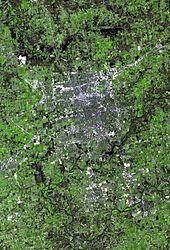
Springfield is located at 37 °11 a²42 a³N 93 °17 a²10 a³W / 37.195 °N 93.28611 °W / 37.195; -93.28611 (37.195098, -93.286213), on the Springfield Plateau of the Ozarks. According to the United States Census Bureau, the city has a total area of 73.8 square miles (191 square kilometres), of which, 73.2 square miles (190 square kilometres) of it is land and 0.6 square miles (1.6 square kilometres) of it (0.87%) is water. The city of Springfield is mainly flat with rolling hills and cliffs surrounding the south, east, and north parts of the city. Springfield is located on the Springfield Plateau, which reaches from Northwest Arkansas to Central Missouri. The majority of the plateau is characterized by forest, pastures and shrub-scrub habitats. Many streams and tributaries such as the James River, Galloway Creek and Jordan Creek flow within or near the city. Nearby lakes include Table Rock Lake, Stockton Lake, McDaniel Lake, Fellows Lake, and Pomme de Terre Lake. Springfield is near the population center of the United States, about 80 miles (130 km) to the east.
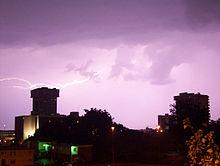
Springfield is characterized by four distinct seasons. It experiences an average surface wind velocity comparable to Chicago, Illinois according to information compiled at the National Climatic Data Center at NOAA. It is placed within "Power Class 3" in the Wind Energy Resource Atlas published by a branch of the U.S. Department of Energy; having an average wind speed range of 6.4 to 7.0 miles per hour.
Springfield falls just short of clearly being in the humid subtropical region (Cfa) and is in the zone that transitions northward to a humid continental climate (Dfa), as defined by the Koppen climate classification system. As such, it experiences times of exceptional humidity; especially in late summer. The city averages 31.7 °F ( na0.2 °C) in January and 78.5 °F (25.8 °C) in July, and has an annual mean of 56.2 °F (13.4 °C). Temperatures of above 90 °F (32 °C) occur on an average 43 days per year, and occasionally reach 100 °F (38 °C), while 4 nights of below 0 °F ( na18 °C) can be expected in winter. It has an average annual precipitation of 45 inches (1,140 mm), including an average 20 inches (51 cm) of snow.
According to a 2007 story in Forbes magazine's list of "America's Wildest Weather Cities" and the Weather Variety Index, Springfield is the city with the most varied weather in the United States.
According to the 2010 United States Census, 159,498 people and 70,167 households resided in the city. The population density was 1951.8 people per square mile (800.0/km2). There were 77,620 housing units. The racial makeup of the city was 88.7% White, 4.1% African American, 0.8% Native American, 1.9% Asian, 0.2% Pacific Islander, and 3.2% from two or more races. Hispanic or Latino (U.S. Census)Latino of any race were 3.7% of the population.
According to the 2000 United States Census There were 64,691 households out of which 24.0% had children under the age of 18 living with them, 40.7% were married couples living together, 10.9% had a female householder with no husband present, and 44.8% were non-families. 35.3% of all households were made up of individuals and 11.6% had someone living alone who was 65 years of age or older. The average household size was 2.17 and the average family size was 2.82.
In the city the population was spread out with 19.9% under the age of 18, 17.4% from 18 to 24, 28.0% from 25 to 44, 19.8% from 45 to 64, and 14.9% were 65 years of age or older. The median age was 34 years. For every 100 females there were 92.9 males. For every 100 females age 18 and over, there were 90.0 males.
The median income for a household in the city was $29,563, and the median income for a family was $38,114. Males had a median income of $27,778 versus $20,980 for females. The per capita income for the city was $17,711. About 9.9% of families and 15.9% of the population were below the poverty line, including 19.1% of those under age 18 and 7.9% of those age 65 or over.
Springfield aos economy is based on health care, manufacturing, retail, education and tourism. With a Gross Metropolitan Product of $13.66 billion in 2004, Springfield's economy makes up 6.7% of the Gross State Product of Missouri.
Total retail sales exceed $4.1 billion annually in Springfield and $5.8 billion in the Springfield MSA. Its largest shopping mall is Battlefield Mall. According to the Springfield Convention & Visitors Bureau, an estimated three million overnight visitors and millions of day-trippers visit the city annually. The city has more than 60 lodging facilities and 6,000 hotel rooms. The Convention & Visitors Bureau spends more than $1 million annually marketing the city as a travel destination.
Bass Pro Shops, John Q. Hammons Hotels & Resorts, BKD, Noble & Associates, Prime, Inc., and O'Reilly Auto Parts have their national headquarters in Springfield. In addition, two major American Christian denominations are headquartered in Springfield: General Council of the Assemblies of God in the United States of America (one of the largest of the Pentecostal denominations) and Baptist Bible Fellowship International (a fundamentalist Baptist denomination with roots to J. Frank Norris).
According to Springfield's 2011 Comprehensive Annual Financial Report, the top employers in the city are:
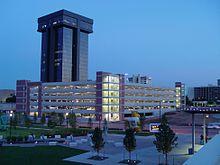
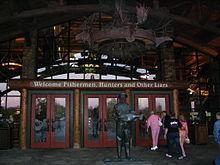
Springfield city government is based on the council-manager system. By charter, the city has eight council members, each elected for a four-year term on a non-partisan basis, and a mayor elected for a two-year term. The mayor is Robert Stephens, who was sworn in after the resignation of Mayor Jim O'Neal (term expires 2013). Council members include Thomas Bieker, Doug Burlison, Cindy Rushefsky, Jeff Seiferd, Jerry Compton, Scott Bailes and John Rush. General seat A has not yet been filled after the swearing in as mayor of the mayor pro tem. The city manager, appointed by the council to be the city's chief executive and administrative officer, enforces the laws as required by the city charter. The presiding officer at council meetings is the mayor. Council meetings are held every other Monday night in City Council Chambers. City council elections are held the first Tuesday in April.
City Utilities of Springfield (CU) is a city-owned utility serving the Springfield area with electricity, natural gas, water, telecommunications and transit services. CU provides service to over 106,000 customers.
The Springfield Public School District is the largest district in the state of Missouri with an official fall 2011 enrollment of 24,366 students attending 50 schools. Public high schools include: Central High School, Kickapoo High School, Hillcrest High School, Parkview High School, and Glendale High School. Private high schools include: Springfield Sudbury School, Summit Preparatory School, Greenwood Laboratory School, New Covenant Academy, Springfield Lutheran School, Springfield Catholic High School, Christian Schools of Springfield, and Grace Classical Academy
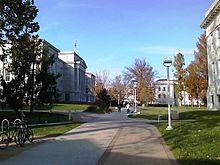
Springfield has several colleges and universities within the city. Founded in 1905 as the "Forth District Normal School", Missouri State University (MSU) is the state's second largest university with just over 20,000 students. For the seventh consecutive year, MSU has been selected for The Princeton Review aos 2010 list of auBest Colleges: Region by Region. au Drury University is a private university with nearly 5,000 students and consistently ranks in U.S. News & World Report's Top 10 Universities in the Midwest. Ozarks Technical Community College is the second largest college in Springfield with more than 15,000 students. MSU, Drury, and OTC are all located in and around downtown Springfield.
Other colleges in Springfield include Assemblies of God Theological Seminary, Baptist Bible College, Central Bible College, Evangel University (known until 2000 as Evangel College, or EC), Forest Institute of Professional Psychology, St. John's College of Nursing and Health Sciences of Southwest Baptist University, Everest College, Cox College (Nursing and Allied Health), Webster University, and University of Phoenix.
There are 92 parks including the Botanical Center at Nathanael Greene/Close Memorial Park, three golf courses, a zoo and other facilities owned or managed by the Springfield-Greene County Park Board. Its programs, such as Hearts adn Parks, encourage people to enjoy a more active lifestyle. The department incorporates a network of linear parks and trails that run near and around geologically unique areas of the Ozarks, such as creek beds and springs. The facilities have been host to state, local and national tournaments in softball, soccer, hockey and tennis. Six recreational lakes are within 100 miles (160 km) of Springfield. Table Rock Lake and the Branson entertainment area are within 45 miles (72 km).
Springfield plays host to college teams from Missouri State University (NCAA Division I-Football Championship Series), Drury University (NCAA Division II), and few minor professional teams (see below). Springfield is also home to a number of amateur sporting events. The PGA sponsored Price Cutter Charity Championship is played at Highland Springs Country Club on the southeast side of Springfield. The Missouri Sports Hall of Fame is located near the city as well. JQH Arena, which opened in 2009, is home to the Missouri State University Bears and Lady Bears basketball teams, and O'Reilly Family Events Center, which opens fall 2010, will be the new home to the Drury University Panthers men's and women's basketball teams.
Like many cities across the nation, Springfield has seen a resurgence in its downtown area. Many of the older buildings have been, and are continuing to be, renovated into mixed-use buildings such as lofts, office space, restaurants, bars, boutiques, and music venues. Located within the Downtown Springfield CID (Community Improvement District) are historic theaters that have been restored to their original state, including the Gillioz Theatre and the Landers Theatre.
In 2001, Phase I of Jordan Valley Park opened along with the Mediacom Ice Park. Phase II of Jordan Valley Park will be complete in late 2011 or early 2012. 2001 also saw the opening of The Creamery Arts Center, a city-owned building inside Jordan Valley Park. It is home to the Springfield Regional Arts Council, Springfield Regional Opera, Springfield Ballet, and the Springfield Symphony Orchestra and provides office and meeting space for other arts organizations which serve the community. The center has been recently renovated to include two art galleries with monthly exhibitions, an Arts Library, rehearsal studios, and classrooms offering art workshops and hands-on activities. The facilities also include a outdoor classroom.
A March 2009 New York Times article described the history and ascendancy of cashew chicken in Springfield, where local variations of the popular Chinese dish are ubiquitous. There are several arts events that occur annually including the Springfield Art Fest and the Missouri Literary Festival. Also the First Friday Art Walk occurs the first Friday of every month. There is a fan convention around February every year, known as Visioncon.
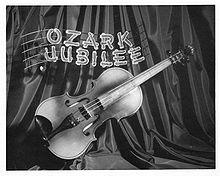
During the 1950s, Springfield ranked third in the U.S. for originating network television programs behind New York and Hollywood. Four nationally-broadcast television series originated from the city between 1955 and 1961: Ozark Jubilee and its spin-off, Five Star Jubilee; Talent Varieties; and The Eddy Arnold Show. All were carried live by ABC except for Five Star Jubilee on NBC; and were produced by Springfield's Crossroads TV Productions owned by Ralph D. Foster. Many of the biggest names in country music frequently visited or lived in Springfield at the time. City officials estimated the programs meant about 2,000 weekly visitors and "over $1,000,000 in fresh income."
Staged at the Jewell Theatre (demolished in 1961), Ozark Jubilee was the first national country music TV show to feature top stars and attract a significant viewership. Five Star Jubilee, produced from the Landers Theatre, was the first network color television series to originate outside of New York City or Hollywood. Ironically, Springfield's NBC affiliate, KYTV-TV (which helped produce the program), was not equipped to broadcast in color and aired the show in black-and-white.
The ABC, NBC and Mutual radio networks also all carried country music shows nationally from Springfield during the decade, including KWTO aoS Korn aos-A-Krackin ao (Mutual).
The Springfield Chamber of Commerce once presented visiting dignitaries with an "Ozark Hillbilly Medallion" and a certificate proclaiming the honoree a "hillbilly of the Ozarks." On June 7, 1953, U.S. President Harry Truman received the medallion after a breakfast speech at the Shrine Mosque for a reunion of the 35th Division. Other recipients included US Army generals Omar Bradley and Matthew Ridgway, US Rep. Dewey Short, J. C. Penney, Johnny Olson, Ralph Story and disc jockey Nelson King.
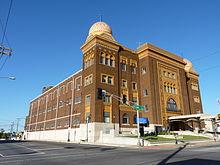
Springfield is served by Interstate 44 which connects the city with St. Louis, Missouri and Tulsa, Oklahoma. Route 13 (Kansas Expressway) carries traffic north towards Kansas City, Missouri. U.S. Route 60, U.S. Route 65, and U.S. Route 160 pass through the city. Formerly U.S. Route 66 and U.S. Route 166 passed through Springfield, and sections of historic US 66 can still be seen in the city. US 166's eastern terminus was once located in the northeast section of the city, and US 60 originally ended (westbound) in downtown Springfield. US 60 now goes through town on the James River Freeway. Major streets include Glenstone Avenue, Sunshine Street (Missouri Route 413), National Avenue, Division Street, Campbell Avenue, Kansas Expressway, Battlefield Road, Republic Road, West Bypass, Chestnut Expressway and Kearney Street. Springfield is also the site of the first diverging diamond interchange within the United States, located at the intersection of I-44 and MO-13 (Kansas Expressway) (at 37 °15 a²01 a³N 93 °18 a²39 a³W / 37.2503 °N 93.3107 °W / 37.2503; -93.3107 (Springfield, Missouri diverging diamond interchange)). Springfield has public transportation operated by City Utilities of Springfield that serves most areas inside the city limits with its fleet of biodiesel-fueled buses.
Springfield-Branson National Airport (SGF) serves the city with direct flights to 12 cities with 33 daily flights. It is the principal air gateway to the Springfield region. The Downtown Airport is also a public use airport located near downtown. In May 2009, the Springfield-Branson airport opened its new passenger terminal. Financing included $97 million in revenue bonds issued by the airport and $20 million of discretionary federal aviation funds, with no city taxes used. The new building includes 275,000 square feet (25,500 m2), 10 gates (expandable to 60) and 1,826 parking spaces. Direct connections from Springfield are available to Atlanta, Chicago, Dallas, Denver, Las Vegas, Memphis, Minneapolis, Orlando, Phoenix, St. Louis, Tampa and Los Angeles. No international flights currently have regular service into Springfield-Branson, but it does serve international charters.
Passenger trains have not served Springfield since 1967, but more than 65 freight trains travel to, from, and through the city each day. Springfield was once home to the headquarters and main shops of the St. Louis-San Francisco Railroad (Frisco). The Frisco was absorbed by the Burlington Northern (BN) in 1980, and in 1994 the BN merged with the Santa Fe, creating the current Burlington Northern Santa Fe (BNSF) Railway. BNSF has three switch yards (two small) in Springfield. Mainlines to and from Kansas City, St. Louis, Memphis and Tulsa converge at the railroad's yard facility in the north part of the city. In October 2006, BNSF announced plans to upgrade its Tulsa and Memphis mainlines into Springfield to handle an additional four to six daily intermodal freight trains between the West Coast and the Southeast. The Missouri and Northern Arkansas Railroad also operates several miles of (former Missouri Pacific) industrial trackage within the city.
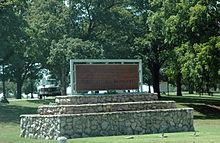
Springfield is a regional medical center with six hospitals and more than 2,200 beds. The city's health care system offers every specialty listed by the American Medical Association. Two of the top 100 hospitals in the U.S. (CoxHealth and Mercy Health System) are located in Springfield, and both are in the midst of expansion projects. The industry employs 30,000 people throughout the Springfield metro area. The United States Medical Center for Federal Prisoners, one of six federal institutions designed to handle the medical concerns of federal inmates, is located at the corner of W. Sunshine Street and Kansas Expressway.
In 2008, America's Promise Alliance ranked Springfield among its "100 Best Communities for Young People" for the third year in a row, and on June 11, 2009 Next Generation Consulting ranked Springfield 17th on its "Next Cities" list. In 2008 Best Life ranked Springfield the 10th worst city in the nation in which to raise a family using information from the U.S. Census Bureau, National Center for Education Statistics, FBI, American Association of Museums, National Center for Health Statistics, and American Bar Association.
In 2007, The Milken Institute ranked Springfield as a "Best Performing City" for creating and sustaining jobs, and Expansion Management magazine listed Springfield among "Top 20 Mid-Sized Metros for Recruitment and Attraction." Also that year, the World Health Organization designated Springfield as a "Safe Community"; and in 2008, Worldwide ERC named Springfield among "The Best Cities for Relocating Families." According to the Springfield News-Leader, the city has been ranked the second-least diverse city in the United States.
The major daily newspaper is the Springfield News-Leader. Additional newspapers include Daily Events (daily), Community Free Press (bi-weekly), Springfield Business Journal (weekly) and The Standard (weekly).
Television stations broadcast in Springfield include KYTV (TV) (NBC), KSPR (ABC), KCZ-TV (CW), KOLR (CBS), KOZK (PBS), KRBK (FOX/MyNetworkTV), KOZL (independent), KWBM (Daystar). The Springfield Designated Market Area, or DMA, is the 75th largest in the United States. The area is composed of 31 counties in southwest Missouri and Arkansas. There are 423,010 television-owning households.
The radio stations received in Springfield are:
Word Count: 5136






